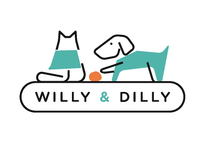How To Train Using Puppy Pads in 4 Steps
House training is a learned behaviour that takes time, patience and consistency in order for your puppy to understand. Puppy pads can be a helpful tool used to teach our puppies where we want them to go during early training days. Later in training, puppy pads can even help with getting your puppy to go outside! Find out more about puppy pad training below.
Benefits of Puppy Pads
You can use newspaper, kitchen roll or old cloths to absorb puppy accidents but these options can be quite messy, laborious to wash and expensive to replace. Puppy pads provide a solution to this problem as they are absorbent, hygienic, cost-effective and easy to dispose of.
You can purchase puppy pads in packs of various sizes and different levels of absorbency, depending on the size of your puppy and their needs from your local retailer.
Find out how to train your puppy to use puppy pads in 4 steps:
Step 1: Introduce Your Puppy to The Pads
After buying your puppy pads, bring them home and show them to your puppy.
Take one or two of the puppy pads out of the packet and lie it on the ground where you’d like your puppy to go e.g. in your kitchen, near the back door.
The spot should be somewhere that your puppy spends most of their time, in close proximity to where you can supervise them and ideally, close enough to the door you’d like them to use when it comes to outdoor training.
Step 2: Look Out for Signs They Need To Go
Anticipating the needs of your puppy is a very important step to help establish the routine of using puppy pads.
There are key behaviours you can be on the lookout for which will indicate when your puppy needs to go. These include:
- Your puppy sniffing the ground.
- Your puppy is lingering in corners of the room.
- Your puppy is crying or barking.
If your puppy is showing these signs, lead them onto the puppy pad or set them on it so they can use it if they need and get used to their routine.
You should also encourage your puppy onto the puppy pad after sleeping, playtimes, eating breakfast and dinner as it is likely that they will require a moment to use it after these times.
A puppy can only hold its bladder for every one hour for every month of its age e.g, a 2-month old puppy can hold its bladder for 1-2 hours, any younger and it will be less time. So be sure to offer the use of the puppy pad to your puppy every few hours.
Step 3: Reward When They Go
Reward your puppy straight away when it successfully uses its puppy pad. Praise them in a happy tone of voice and you could even offer them a special soft treat that is only used when they go on the pad.
It’s important to reward the behaviour straight away as your puppy will forget if too much time passes by in-between.
Likewise, if you later find your puppy has an accident off the pad, don’t get angry at them. They won’t understand and may learn to be afraid of going to the toilet or afraid of you. Instead, clean up the mess with little fuss and encourage them to make use of the puppy pad by going back to step 1 and 2.
Step 4: Be Consistent With Your Training
Ensure that everyone in your house understands the puppy pad training method so everyone can help. You’ll want your puppy to clearly understand that when it’s time to go, they should go on the puppy pad.
Regularly offer usage of the puppy pad to your puppy after every meal, rest and playtime. It is important to keep the puppy pad in the same spot throughout training as this will stop any confusion for your puppy.
Finally, make sure everyone uses the same clear phrase when bringing your puppy to its pad e.g. “Toilet Time”. And similarly, when praising your puppy for successfully using their pad, e.g. “Well Done!”
Use these steps consistently, patiently and over time your puppy will naturally run to their pad when they feel they need to go as they will have learnt their routine, and remember to give your puppy praise for their success!
Training your puppy in its early years of life will help with training and their development in the future, as well as benefiting your own understanding of your puppy and their needs.
Related blog: How To House Train Your Dog (Going Outside)